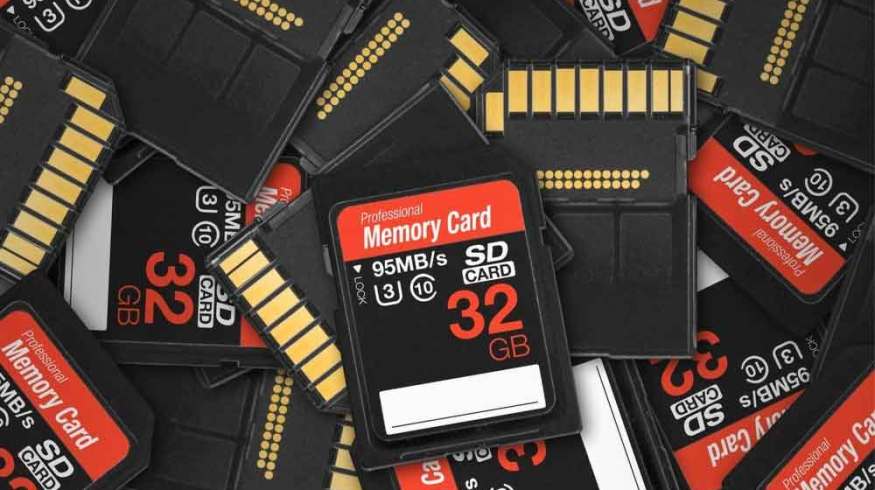
Is the Evolution of Compact Flash Media the End of the SD Card?
Compact Flash media will be the choice for the highest pixel-capturing cinema cameras. How does this impact proprietary media and SD cards?
You could say that the pixel density race for cameras is another way of selling televisions. It can’t be cinema’s fault, as they still only require 2K masters for the big screen. Meanwhile, cameras are now pushing the 8K barrier.
This puts the battleground for mobile storage inside the camera. As you go further up the professional ladder, this becomes more important—higher resolutions take longer to manage and wrangle.
If you’re a one-person content creator, it’s of lesser importance as you can put the kettle on while your footage transfers to the computer. However, if you’re part of a team, you may not have that luxury.
Below, there are some examples of the latest Type B CFExpress cards from some of the more popular suppliers with storage amounts against price showing.
CFExpress

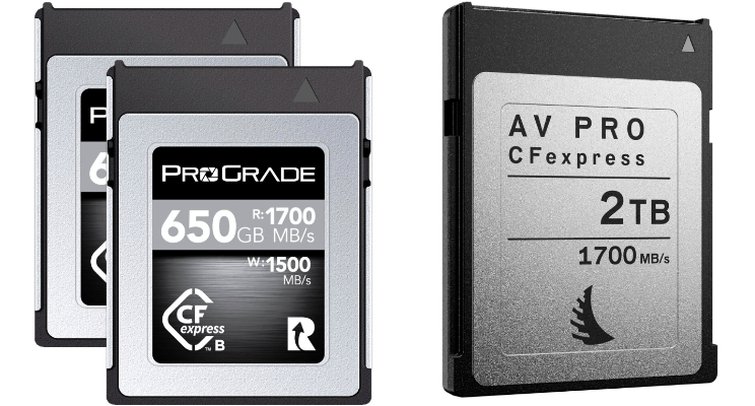
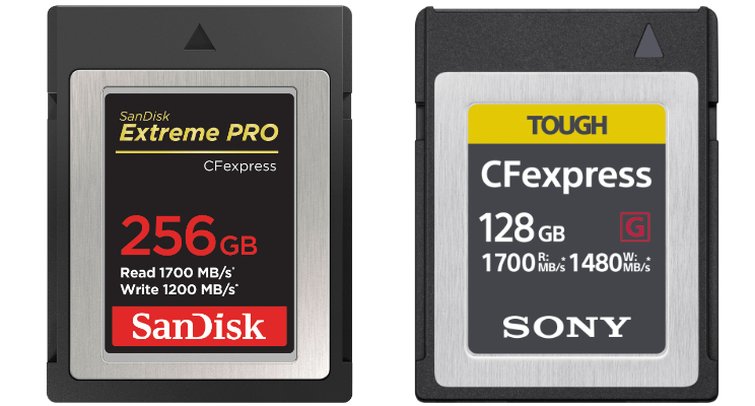
CFExpress is the third type of Compact Flash card, the fourth if you include the old XQD format launched in 2012. Incidentally, XQD card slots are the same size as CFExpress Type B card slots so, with an update, you can use those and subsequently CFExpress cards (XQD slots were found mainly on Nikon cameras).
And, yes, I did say Type B. So, we’re in a staggered release for CFExpress cards and already using Type B, with Type C to come with its potentially blistering speed of 4GB/s. The transfer speeds of these cards are staggering, which is the whole point.
For instance, the new Angelbird 160GB AV PRO CFExpress 2.0 Type B SX card offers maximum read speeds of 1785 MB/s and maximum write speeds of 1600 MB/s, as well as minimum sustained read speeds of 1785 MB/s, and minimum sustained write speeds of 1480 MB/s. The card cost $180.
In comparison, an Angelbird SDXC 128GB card is $160 with a sustained read speed of 280 MB/s and a sustained write speed of 260 MB/s. That’s over six times slower to read than the Angelbird CFExpress card. Write speeds are just under that, but similar.
Just imagine what you could do with the time you save downloading with CFExpress. You could finish your work a lot quicker and have a happier crew who could go home earlier. And, as you get bigger density cards, you save more time.
For SD cards with those numbers, the future looks bleak. CFast 2.0 is also languishing behind at a relatively sedate transfer read speeds of 525MB/s and write speeds of 425MB/s.
Bigger CFExpress Card Slots
The camera manufacturers who saw this coming have designed their cameras with obsolescence in mind. Cameras like the Canon C300 Mk III has three memory card slots. One holds a UHS-II SDXC card and two hold Type B CFExpress cards. Canon really committed to the Compact Flash format, as that camera launched in April last year.
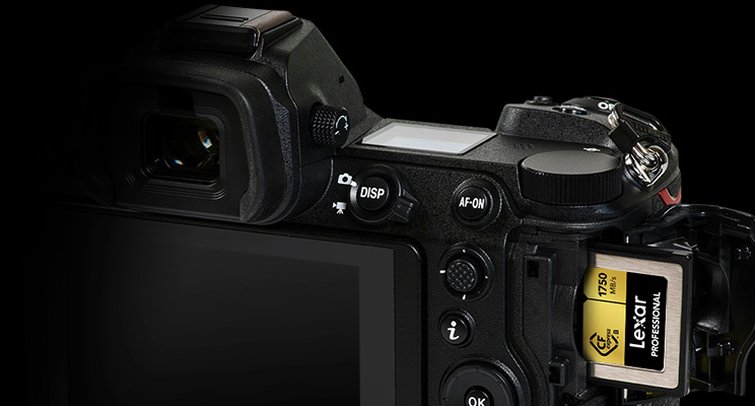
The Sony a7S III camera, launched in September 2020 with two SD card slots and two CFExpress Type A slots. The cards are quite similar in size with SD being 32.0×24.0×2.1 mm and CFExpress Type A being 20.0x28x2.8mm. Type B is 29.6 x 38.5 x3.8mm (Type C is much bigger at 54.40×74.10×6.0mm).
But CFExpress Type A is still cranking out footage at around 1 GB/s. Sony’s 80GB CFExpress Type A TOUGH Memory Card reads data at 800MB/s and writes it at 700MB/s. The price is $198. Still pricier than the Angelbird SDXC card above, but nearly three times as fast.
What Other Cameras Support CFExpress?
A cursory search through recently launched cameras shows the new Blackmagic Broadcast URSA G2 offering two CFast 2.0 card slots, two SD UHS‑II card slots, and a single USB‑C 3.1 Gen 2 expansion port for outboard SSD media.
The Nikon Z9 8K camera has dual CFExpress Type B memory card slots. DJI’s Ronin 4D offers a single CFExpress card slot, DJI’s own SSD media, and the same USB-C 3.1 Gen 2 expansion port as Blackmagic Design.
RED V-RAPTOR 8K uses a single CFExpress Type B card slot as does Sony’s AI and Panasonic’s S1 and S1R cameras.
RED’s CFExpress card has been designed by Angelbird for a 660GB pro design and priced at a huge $959. It’s been engineered with protection against shock, dust, water, temperature extremes, and x-rays.
But, RED camera owners have always paid a premium for their “professionalized” proprietary media. Angelbird’s 2TB CFExpress card is cheaper at $899.99, so if I had a RED V-RAPTOR, I’d buy that.
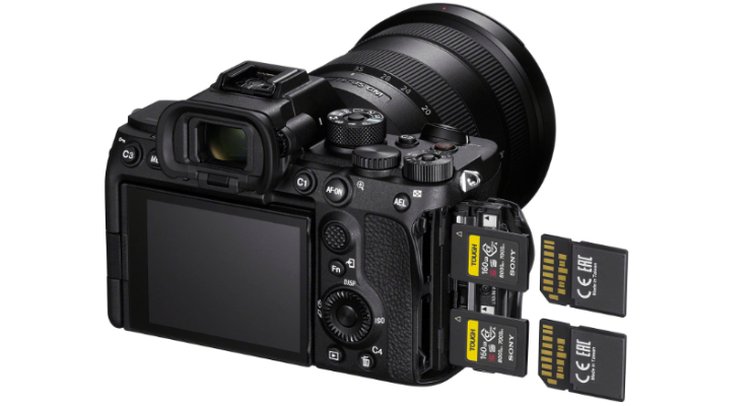
So, there’s a trend and companies like Nikon and Sony are ahead of the CFExpress card game—Nikon by coincidence of having the XQD format already taking real estate in their camera bodies.
Sony has always been innovators in media. Their own latest cinema camera, the Venice 2, uses a proprietary card called AXS, which has a speed of 4.8GB/s for their 512GB card and is around $4,000 per card.
But, can Sony and others compete with CFExpress Type C, which is just around the corner with its 4GB/s performance? The impetus will come from the customers, but manufacturers will have to re-engineer their camera bodies to work with a new media format. Of course, that kind of change isn’t new. It’s just a matter of time.
Compact Flash is trying to unify the mobile storage market with CFEpress and has the credentials to do so. What’s the bet that most new cameras in 2022 will have at least a Type A card slot in their cameras.
We’ll let you know.
A few more gear-related articles for you:
- Attack of the Mini Drones – Smaller Crafts Can Offer More Value
- 5 YouTubers to Follow for Creative Cinematography
- How to Fix a Stuck Pixel on the Canon C300 Mk III
- Elgato’s Master Mount System Is a Must-Have Piece of Kit
- The 7 Best Audio Interfaces of 2021 + Bonus Video
Cover image via Derek Brumby.





